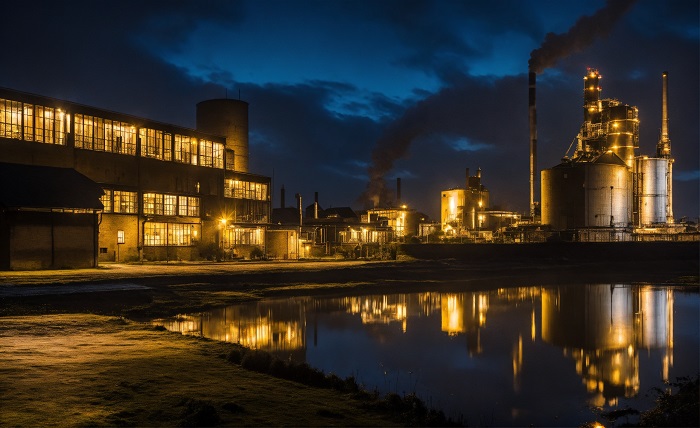Industrial Areas: A Gateway to Economic Progress

Introduction
Industrial areas stand as the backbone of modern economies, serving as epicenters of production, innovation, and employment. From manufacturing plants to logistics centers, these hubs play a pivotal role in driving economic growth and development. In this comprehensive guide, we unravel the intricacies of industrial areas, exploring their significance, challenges, and future prospects.
Industrial Areas
Delving into the heart of industrial areas, it becomes evident that these zones are dedicated to housing various industrial activities, ranging from heavy manufacturing to light assembly. Characterized by clusters of factories, warehouses, and distribution centers, industrial areas are instrumental in driving production and fostering industrialization.
Economic Impact of Industrial Areas
The economic impact of industrial areas reverberates far and wide, fueling job creation, infrastructure development, and technological advancement. These vibrant zones attract investments, spur innovation, and contribute significantly to GDP growth, making them indispensable components of thriving economies.
Role in Employment Generation
One of the most significant contributions of industrial areas lies in their role as engines of employment generation. By providing opportunities for skilled and unskilled labor alike, these zones empower individuals, alleviate poverty, and enhance socio-economic mobility within communities.
Infrastructure and Facilities
Industrial areas boast robust infrastructure and state-of-the-art facilities tailored to meet the diverse needs of businesses. From efficient transportation networks to modern utilities and amenities, these zones offer a conducive environment for industrial activities to flourish.
Sustainability and Environmental Considerations
In an era marked by growing environmental consciousness, industrial areas are increasingly focusing on sustainability initiatives and eco-friendly practices. Embracing renewable energy, waste management strategies, and green technologies, these zones strive to minimize their environmental footprint and foster responsible industrialization.
Challenges Faced by Industrial Areas
Despite their pivotal role in economic development, industrial areas encounter a myriad of challenges, including infrastructural bottlenecks, regulatory hurdles, and environmental concerns. Balancing economic growth with environmental sustainability remains a key challenge for stakeholders in these zones.
Technological Innovation in Industrial Areas
Technological innovation serves as a catalyst for transformation within industrial areas, revolutionizing production processes, optimizing efficiency, and enhancing competitiveness. From automation and IoT to AI-driven analytics, technological advancements are reshaping the landscape of industrialization.
Future Trends and Opportunities
The future of industrial areas holds immense promise, driven by emerging trends such as digitalization, Industry 4.0, and the rise of smart manufacturing. As these zones evolve to embrace disruptive technologies and agile business models, they are poised to unlock new avenues for growth and innovation.
Global Perspective: Industrial Areas in the Global Economy
Industrial areas transcend geographical boundaries, playing a crucial role in the interconnected global economy. As manufacturing and supply chains become increasingly globalized, industrial areas serve as vital nodes in the network of international trade and commerce.
Policy Implications and Strategic Interventions
Effective policymaking and strategic interventions are imperative for fostering the sustainable growth of industrial areas. Governments and policymakers play a pivotal role in creating an enabling environment through conducive policies, incentives for investment, and infrastructure development initiatives.
Conclusion
Industrial areas stand as vibrant hubs of economic activity, driving growth, innovation, and employment opportunities. Despite facing challenges, these zones continue to evolve, leveraging technological advancements and sustainable practices to chart a path towards a prosperous future.
FAQs
1. What are industrial areas?
Industrial areas are designated zones dedicated to housing various industrial activities, encompassing manufacturing, warehousing, and logistics operations.
2. How do industrial areas contribute to economic growth?
Industrial areas contribute to economic growth by generating employment, attracting investments, and fostering innovation and technological advancement.
3. What challenges do industrial areas face?
Industrial areas face challenges such as infrastructural bottlenecks, regulatory complexities, environmental concerns, and the need to adapt to technological disruptions.
4. How can industrial areas promote sustainability?
Industrial areas can promote sustainability through initiatives such as adopting renewable energy sources, implementing waste management strategies, and embracing green technologies.
5. What is the future outlook for industrial areas?
The future outlook for industrial areas is promising, driven by trends like digitalization, Industry 4.0, and smart manufacturing, which offer opportunities for growth and innovation.




